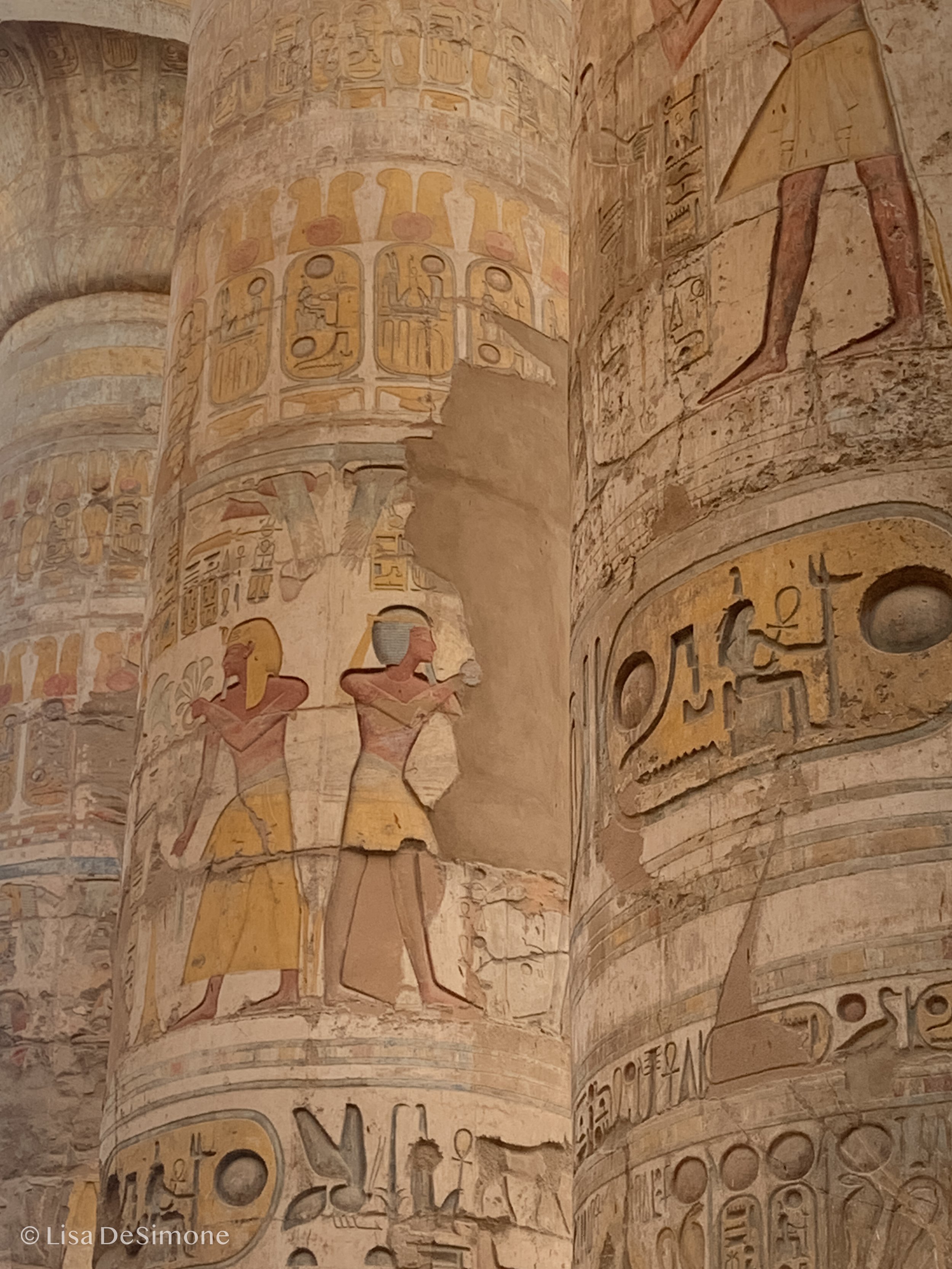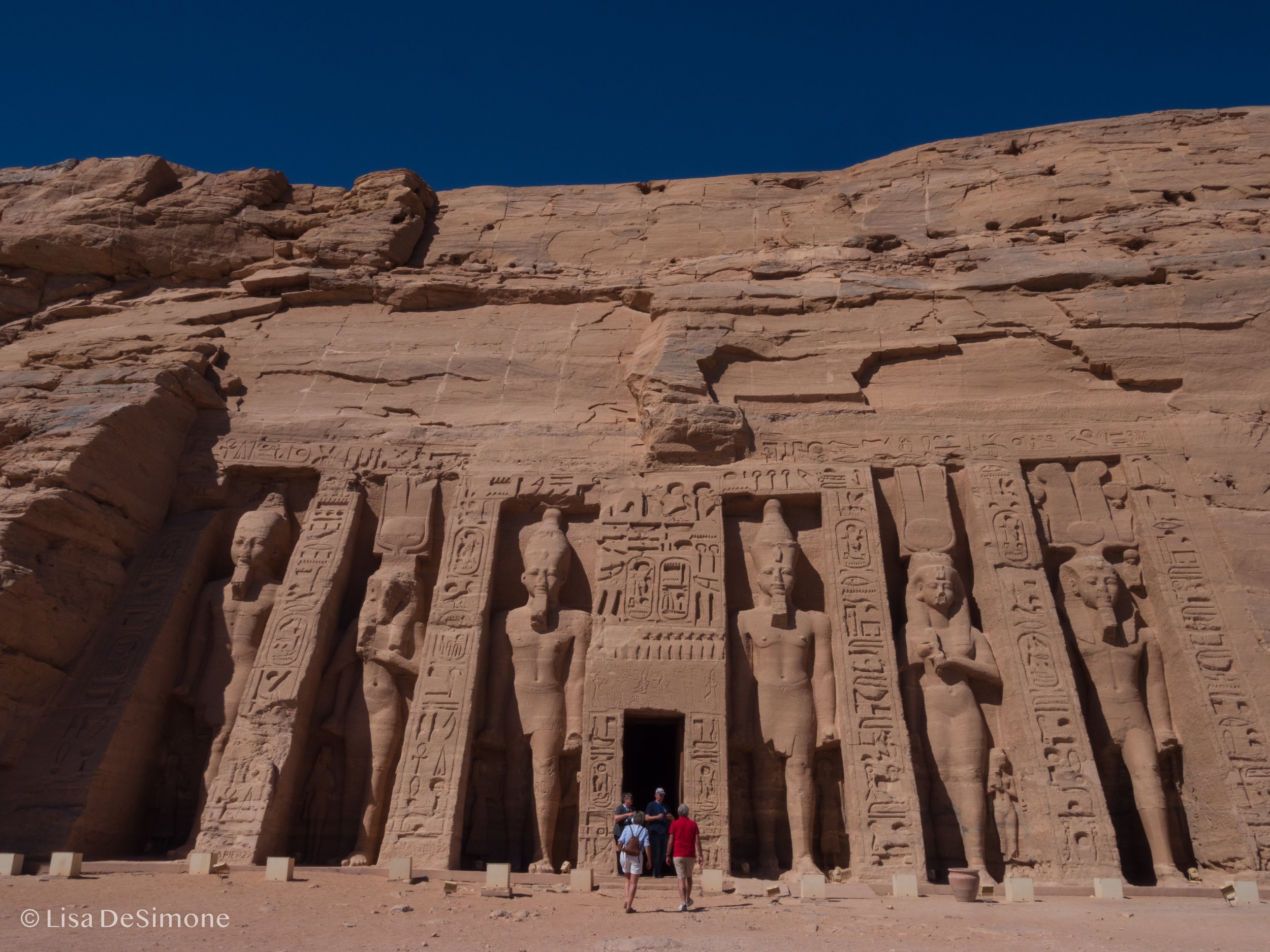Pyramids and Pharaohs: Recapping An Incredible Trip to Egypt
/Have you ever dreamed of standing in front of the Great Pyramids of Giza, cruising down the Nile River, or personally seeing tomb walls covered in Egyptian hieroglyphics? If so, then read on as I walk you through my latest adventure to magical Egypt. The ancient riches, interesting landscapes, iconic sights and lovely people make Egypt an utterly fascinating place to visit - and one I highly recommend.
ANDIAMO!
Breakfast with a view of the Great Pyramids, from the terrace of the Marriott mena house hotel restaurant. the weather in january was ideal for touring egypt.
Like so many, I learned about Egypt, mummies, the Nile River, the Pyramids, and ancient Egyptian pharaohs (especially King Tut) at a young age. Growing up I was utterly captivated by the stories and vivid imagery. Now, as an adult, I am not ashamed to admit that I still hold a strong fascination for all things ancient Egyptian! So it was with great excitement that my friend Sharon and I planned a private, personalized trip to Egypt in January 2023. Many people wonder when is the best time to visit Egypt. Tour agencies will tell you that the official tourist season runs from September to April, but even those book-end months can be hot. If you want to explore in a comfortable climate and escape the oppressive heat, I would recommend October - March.
It was my 2nd visit to Egypt and held as much anticipation for me as the first time I went in 2014. Taking a trip to Egypt in 2023 was like traveling back - WAY back - in time, but also experiencing a country on the brink of a new beginning. In an effort to combat overcrowding in Cairo and reinvigorate the lagging economy, the current President has outlined several (sometimes controversial) mega-projects for the country. The largest of these projects was the recent building of a new administrative capital on a sprawling expanse of desert just outside of Cairo. Others include new multi-lane highways, a revamped subway system and giant bridges across the Nile.
Meanwhile, recent museum projects anchor the country to its very long history. In 2021, the National Museum of Egyptian Civilization opened with much fanfare - a grand parade across Cairo that moved 22 royal mummies from the old museum built in 1902. Having visited The Museum of Civilization on my recent trip, I would definitely add it to any list of “must see” sites in Cairo - the mummies were incredible.
The long-anticipated Grand Egyptian Museum (hopefully opening soon) is expected to house some 100,000 artifacts, including the majority of King Tutankhamen’s treasures. Sharon and I had the privilege of getting a pre-opening private tour of the GEM’s finished parts and I can say with certainty that it is going to be a fantastic addition to Egypt’s already incredible collection of museums.
It is very difficult to describe in words and images the wonder I felt during my time in Egypt…the grandeur of the sites, the detailing in the carvings and paintings, the friendliness of the people, the chaos of Cairo. Nearly every temple visited, tomb entered and hieroglyph seen was met with widened eyes and dropped jaw.
a felucca sails down the nile river
Standard Egypt itineraries have two main components: visiting the sites and museums in Cairo, and then delving into the ancient cities found along the Nile River on a multi-day cruise (sometimes with a day trip down to Abu Simbel). I believe the learnings in Cairo provide the perfect foundation for any Egyptian adventure, so I recommend touring Cairo first. Many people also want to visit the Red Sea coast or the Sinai Peninsula, both worthwhile places for some sun, SCUBA and relaxation after your days of dusty exploration.
I also think it is also useful to do a bit of research before arriving in country, learning some basics about the various dynasties of Ancient Egypt. I listened to an excellent series of lectures on Audible titled “The History of Ancient Egypt”, by Bob Brier and part of The Great Courses series. It was long and dense with information, but very worthwhile listening.
On this trip, I felt like I was seeing Egypt through a new set of eyes, and these were eyes filled with astonishment! I’m not sure I will ever tire of visiting Egypt - I feel I could revisit the same sites and still be impressed, and there is so much more for me to see.
If only I understood all the stories written on these tomb walls and ceiling
DISCOVERING CAIRO
Cairo is described in the Lonely Planet guidebook as “magnificent and infuriating”. How very true! Cairo consists of 2 main governorates, Giza and Cairo. Having the highest population of any city in Africa, Cairo is very crowded, the traffic is next-level, many of the buildings are dirty and worn down, and the entire city hums with intensity - but it’s worth the frustration as you discover all the wonders housed in this vibrant megacity.
The most significant things to see in Cairo are spread all over, so getting from place to place can take time, which is why it pays to be intentional when planning your days. My friend and I chose to split our accommodations between Giza and Cairo: we were spending much more time in the city than most people and we wanted to experience both sides of the Nile. For anyone spending just a days in Cairo, my highlights/recommendations would be to spend 3 days doing the following:
Day 1: Pyramids of Giza, Sphinx, Grand Egyptian Museum (GEM)
Spend your first full day in Cairo on the Giza Plateau, which encompasses both the Great Pyramids as well as the colossal Sphinx, with the GEM right next door. The Giza Pyramids are the last remaining wonder of the ancient world, and despite being just a few kms outside of the city, rise grandly out of sand filled desert. The pyramids are quite a site to behold and standing at the base of one leads to the obvious question “how were they built”?!?!? It is possible to enter the pyramids, and although there isn’t much to see inside, if you aren’t claustrophobic and can bend over / crouch and walk at the same time, it is a very worthwhile experience!
Day 2: Dahshur, Memphis, Saqqara, then Cairo at night
On your second full day in Cairo, alongside your guide dig a little deeper into Egypt’s past by visiting the ancient capital city of Memphis, the famous Step Pyramid of Zoser in nearby Saqqara, and some of the most impressive and historically significant pyramids in Dahshur. Amazingly, excavations and discoveries are still taking place, particularly in Saqqara where in February 2023 it was announced that scientists unearthed the oldest known gold-covered mummy in Egypt after a year-long excavation that also revealed statues, tools, pottery and dozens of other artifacts! In the late afternoon head to one of Cairo’s most picturesque areas, taking in the paths and alleyways of the Khan El Khalili bazaar (souk), stopping for dinner at a traditional eatery or shisha bar.
Day 3: National Museum of Civilization, Old Cairo, food tour
Spend your last full day in Cairo enjoying some of my favorite experiences. For me the National Museum of Civilization is a must visit in Cairo. This museum houses 50,000 artifacts from prehistoric time to present day and the 22 mummies (18 kings and 4 queens) on display on the ground floor of the museum were extremely interesting and one of the highlights for me in all of Cairo (no photos of the mummies were allowed).
Old Cairo, within the boundaries of the Roman Fortress of Babylon, showcases a lesser known side of Cairo and provides a bit of relief from the crush of tourists at all the other sites. For 300 years, Egypt was a Christian nation and the most famous Coptic church in Cairo - El Muallaqa, aka the Hanging Church - is located in Old Cairo. Also in Old Cairo is the synagogue of Ben Ezra.
Another highlight of my time in Cairo was our Bellies en Route food tour. Owned and operated by two young woman, this business was started in 2016 and has been thriving ever since. We really enjoyed our walking tour, with numerous stops for food, drinks and dessert - mostly to places I would have never entered on my own. Did you know that Egyptian falafel is made with fava beans, and not chickpeas? Neither did we until this tour :-) We not only peppered our guide with questions about Egyptian cuisine, but we learned a good deal about every day life in Egypt. Book a tour - you won’t be sorry.
CRUISING THE NILE RIVER
After our time in Cairo we headed south to begin our Nile River cruise. Without the Nile, Egypt would be nearly devoid of people. As the deep green vegetation floats by on a Nile cruise, it’s easy to see why most people historically lived, and continue to live today, within a few miles of the Nile River.
Floating down the nile river
Our Nile River cruise, like most, started in in Luxor, located approx. 400 miles south of Cairo (reached via an easy flight). Luxor, often referred to as the largest open air museum in the world, was once the ancient city of Thebes and the capital of Egypt from 1570 to 1069 BC. The Nile River splits Luxor into two parts, the East Bank and the West Bank, and many ancient tombs and temples are scattered along both.
The Nile is the world’s largest river and flows north, therefore the areas referred to as Lower Egypt are in the north, while Upper Egypt refers to areas in the south. The majority of the most significant temples and tombs are located in upper Egypt and are within easy reach of the Nile, which is why a Nile river cruise is an essential part of any trip to Egypt.
The ancient Egyptians correlated the rising and setting of the sun to their belief in the afterlife. They watched the sun die over the west bank and be reborn over the eastern horizon every day, and so they buried their dead on the west bank of the Nile and referred to the east bank as the “land of the living”. Most Nile Cruise boats provide land based tours to both the East and West bank attractions.
The East Bank of Luxor is the location of Luxor town, where locals live and work, and is where you will find most hotels and restaurants. Two of the most spectacular sites to visit in Egypt - Karnak Temple complex and Luxor Temple - are on the East Bank. Every cruise ship docks here, so these complexes are crowded, but oh-so-amazing!!! The 3km-long Alley of Sphinx connecting Karnak and Luxor has been excavated and recently opened, making it possible to walk between the two complexes, something I plan to do on my next visit.
The West Bank was the ancient Egyptian necropolis, and is filled with what looks like an endless number of tombs and mortuary temples. Here you will find the famous Valley of the Kings (where the tomb of King Tut was discovered), the Valley of the Queens, Mortuary Temple of Queen Hatshepsut, Tombs of the Nobels and Workers’ Temple. I spent as much time as I could marveling at the ancient hieroglyphs and drawings covering every inch of space inside the tombs here. No photos can do justice to the wonders on the walls and ceilings - Truly amazing!
One of my favorite things to do when traveling is to take a hot air balloon ride whenever available. I was overjoyed to find out that flights were possible over the ancient monuments at Luxor at sunrise. We even saw workers excavating some new tombs. What a truly surreal experience! Visiting Luxor is like walking onto a movie set: the scale is hard to comprehend and the detailed etchings and paintings remain bright and bold colored even to this day. I really wish I had much more time to unearth all of Luxor’s treasures
* see photo carousel below for additional photos from Luxor *
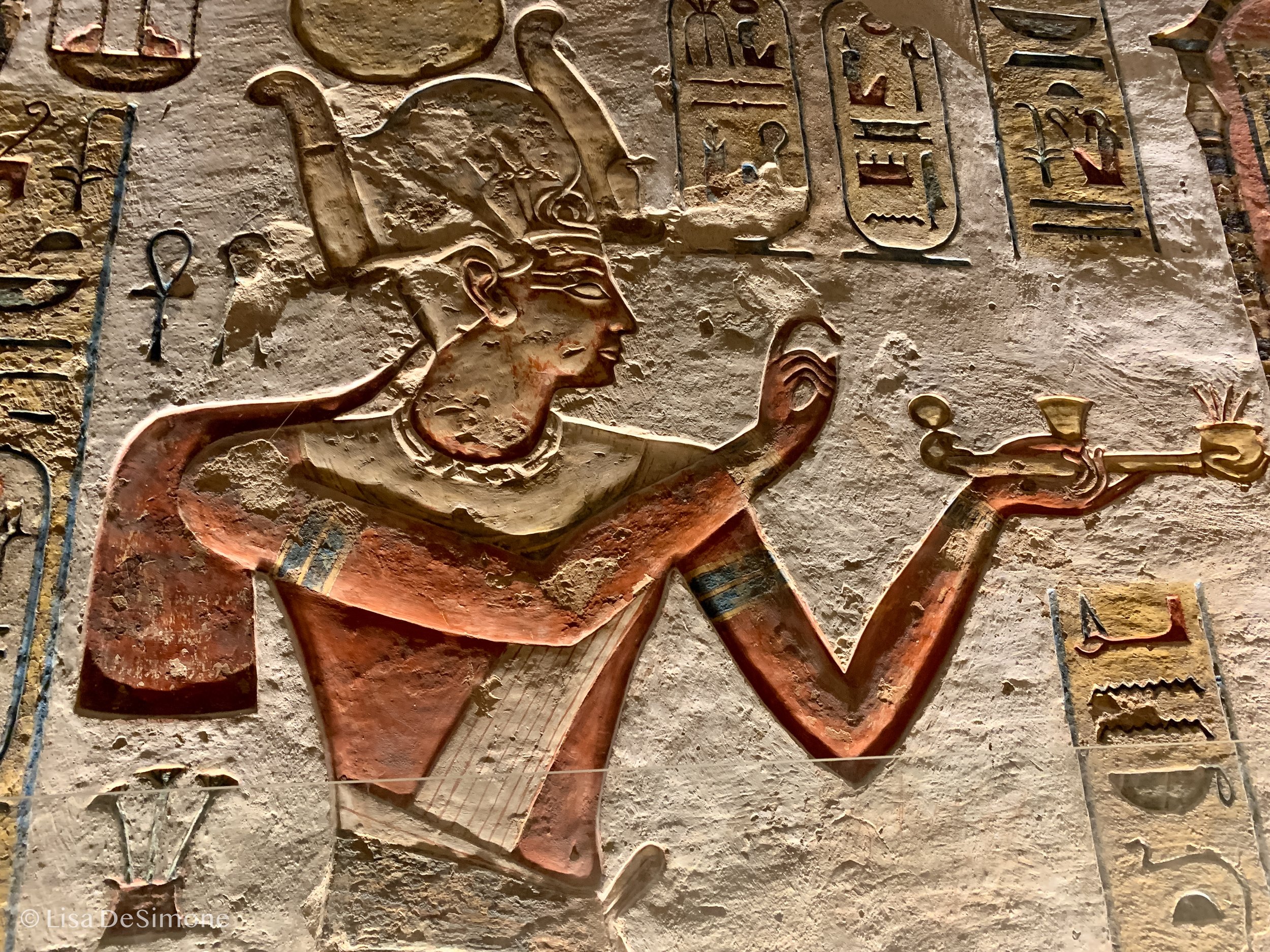

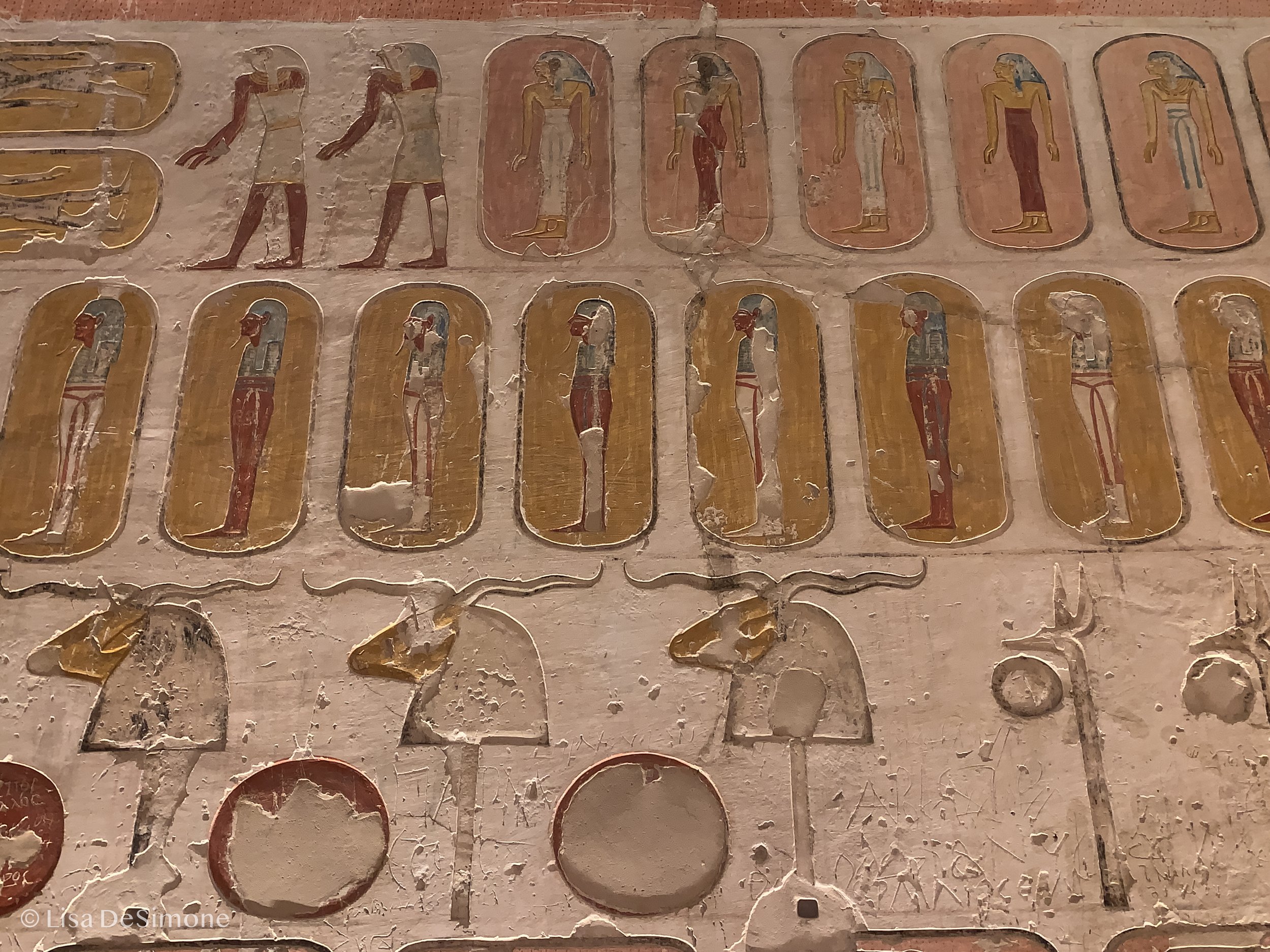
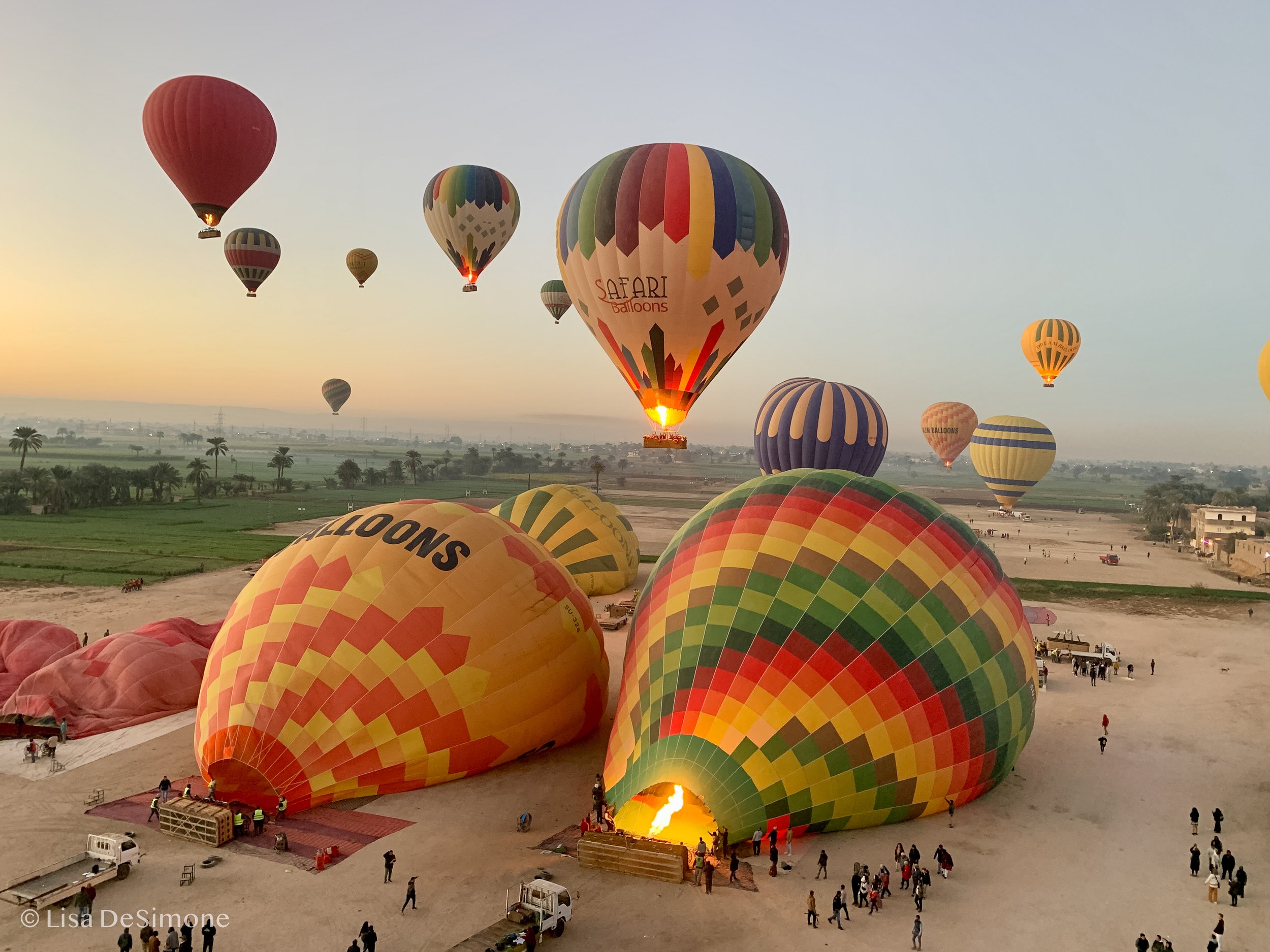
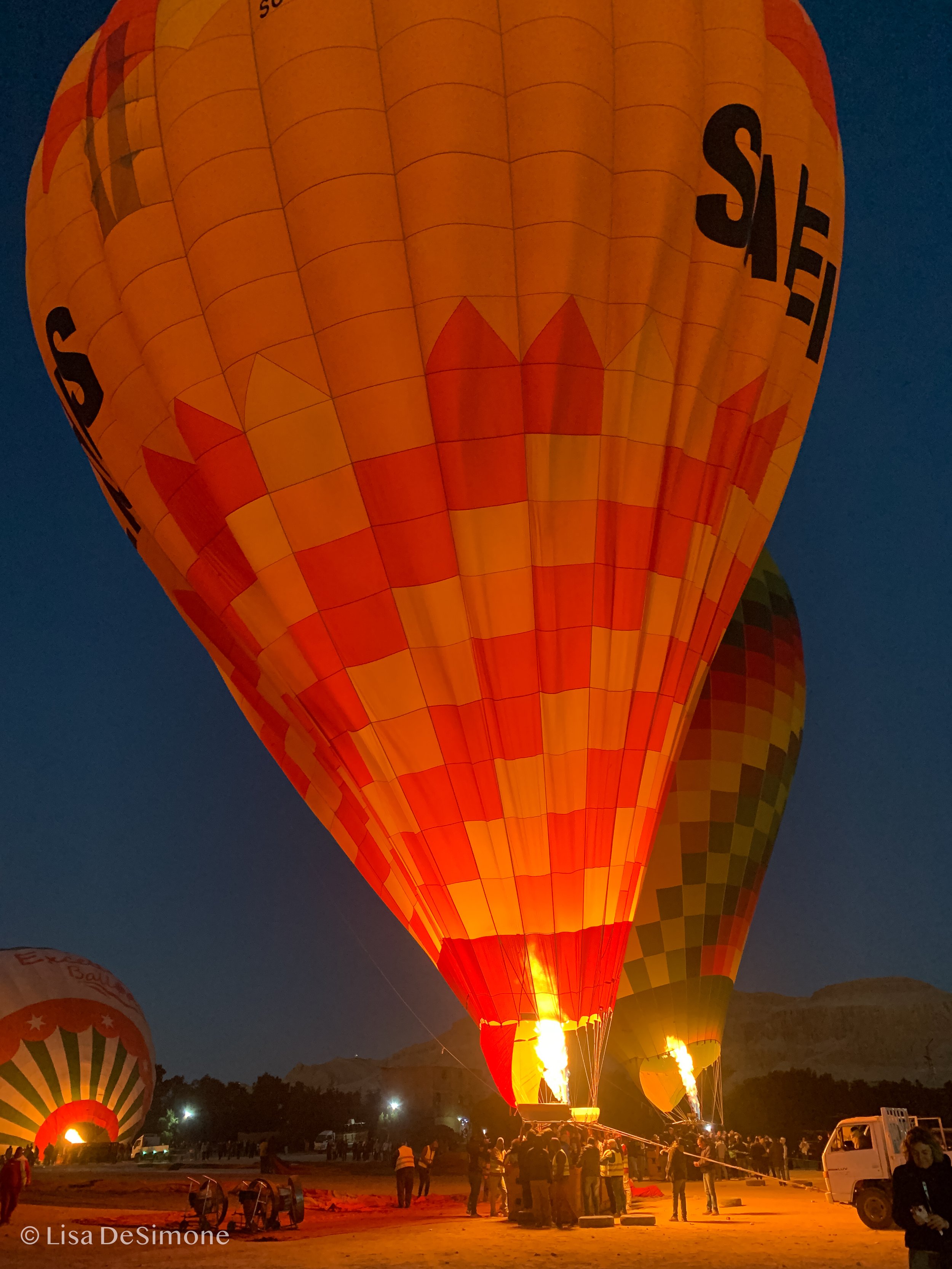
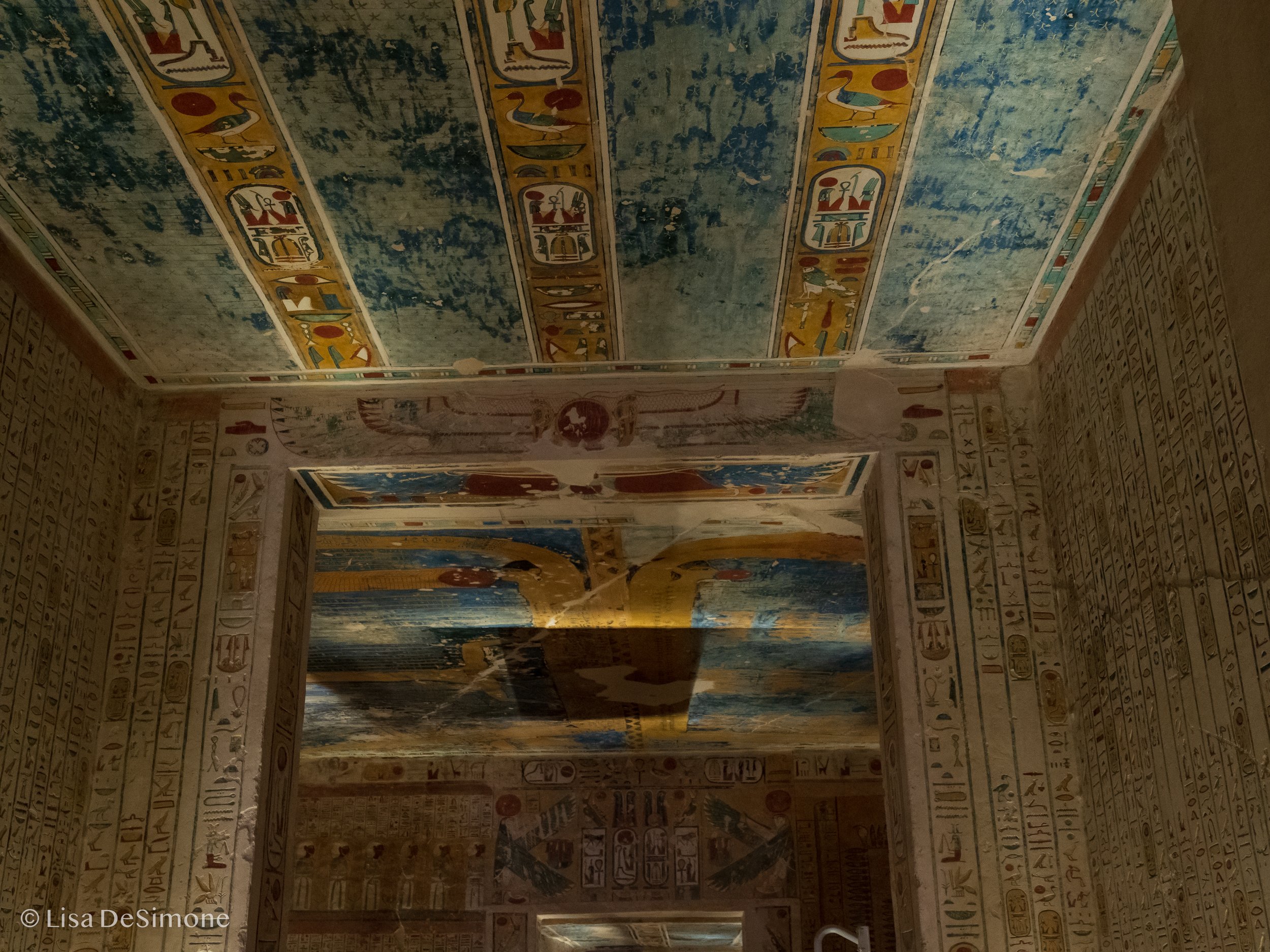
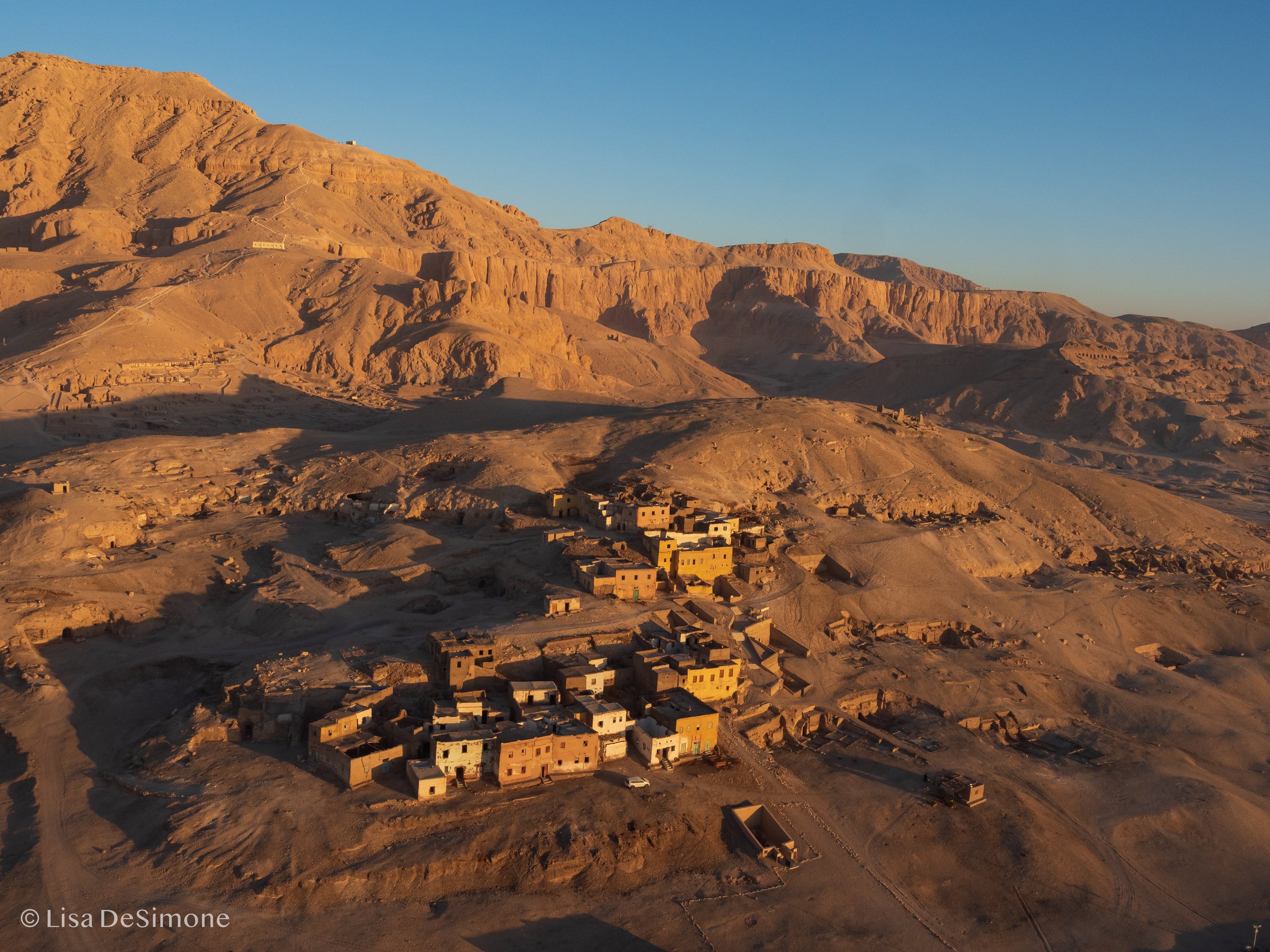
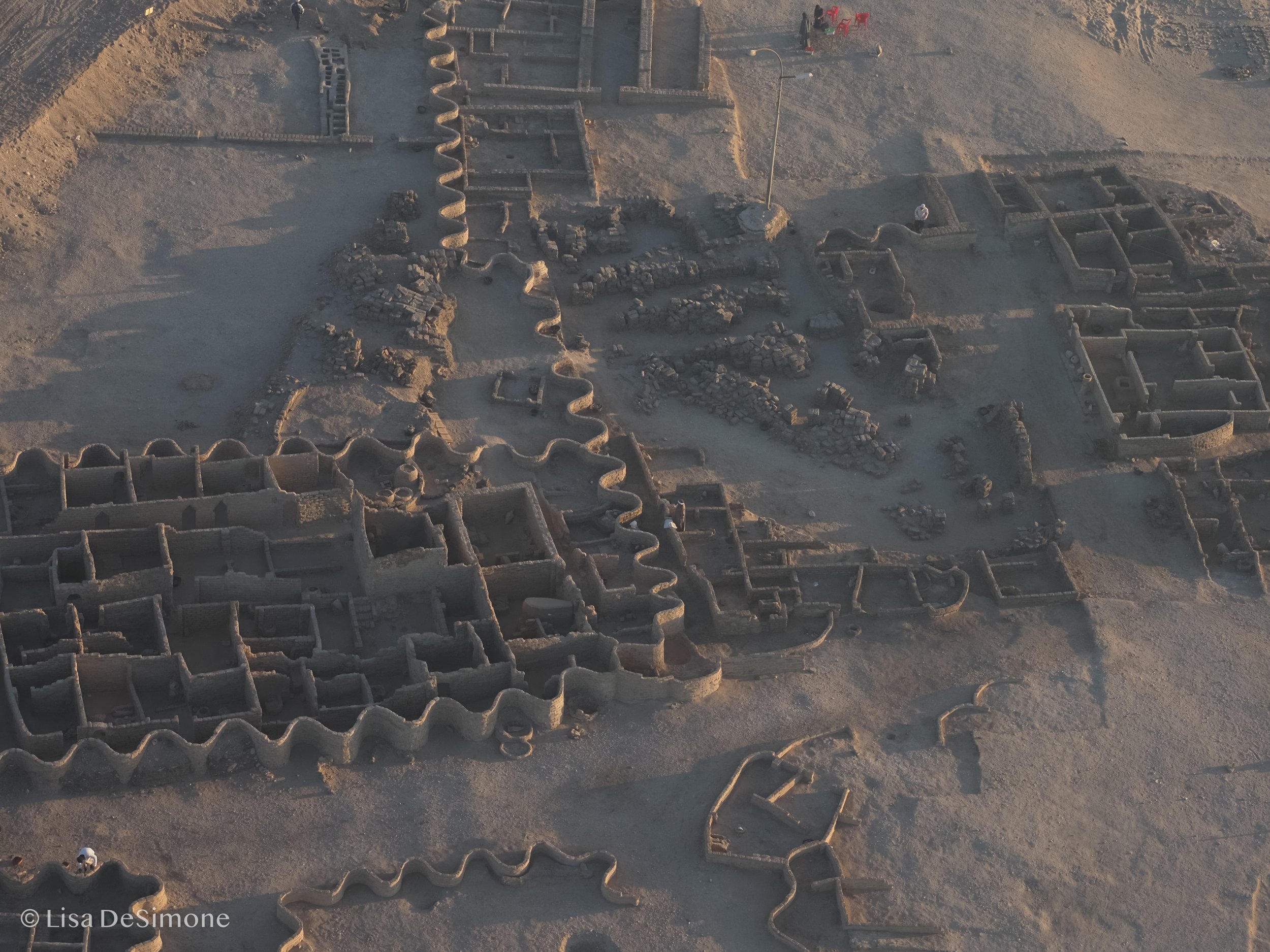
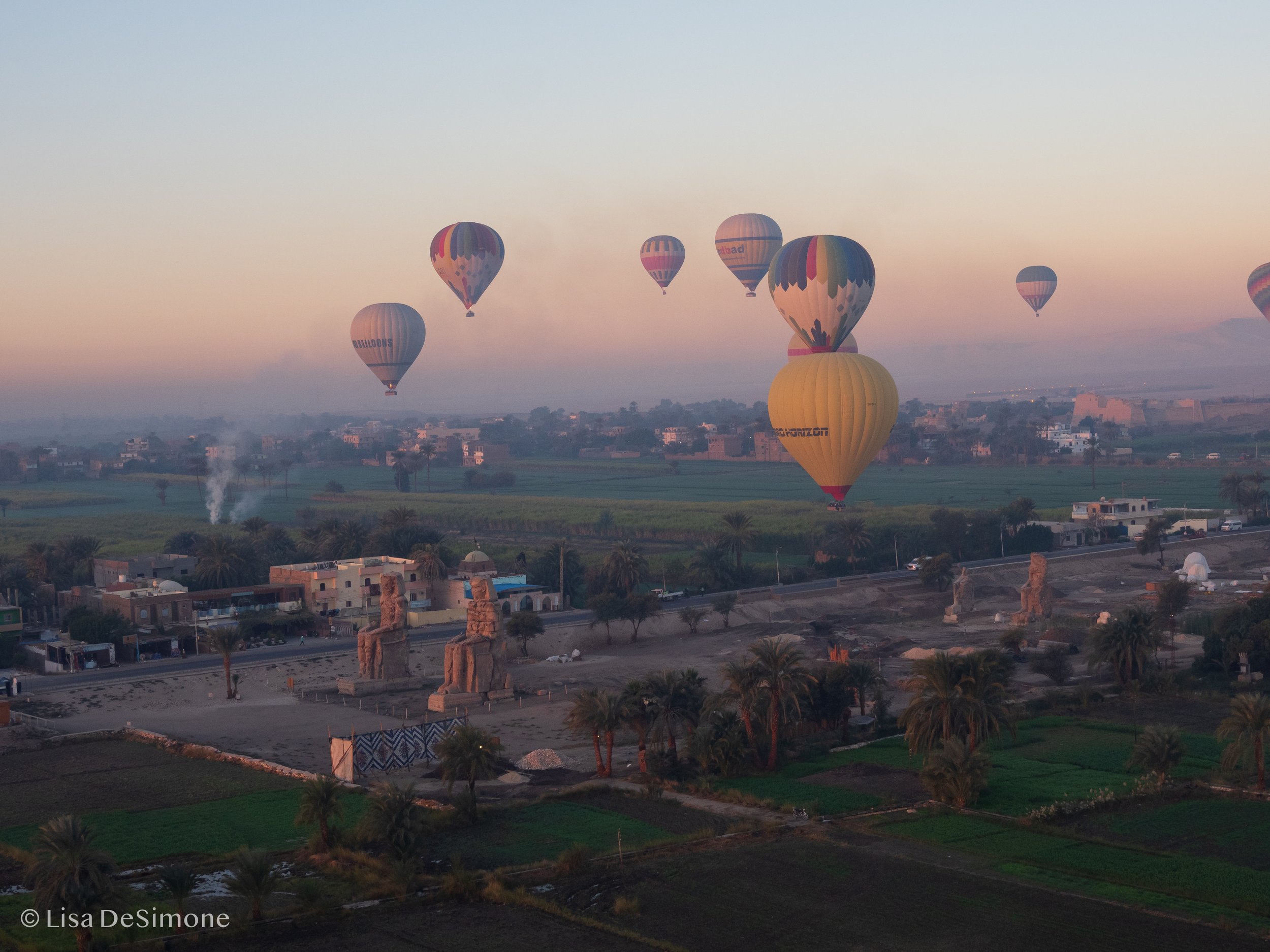
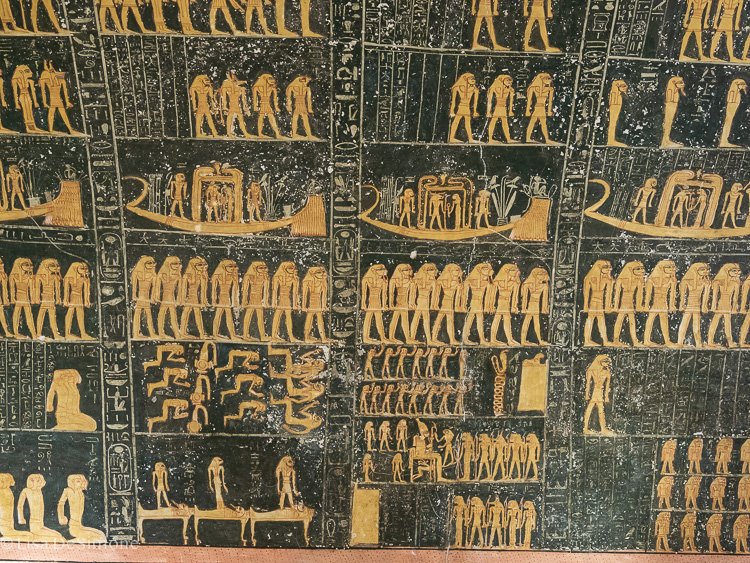
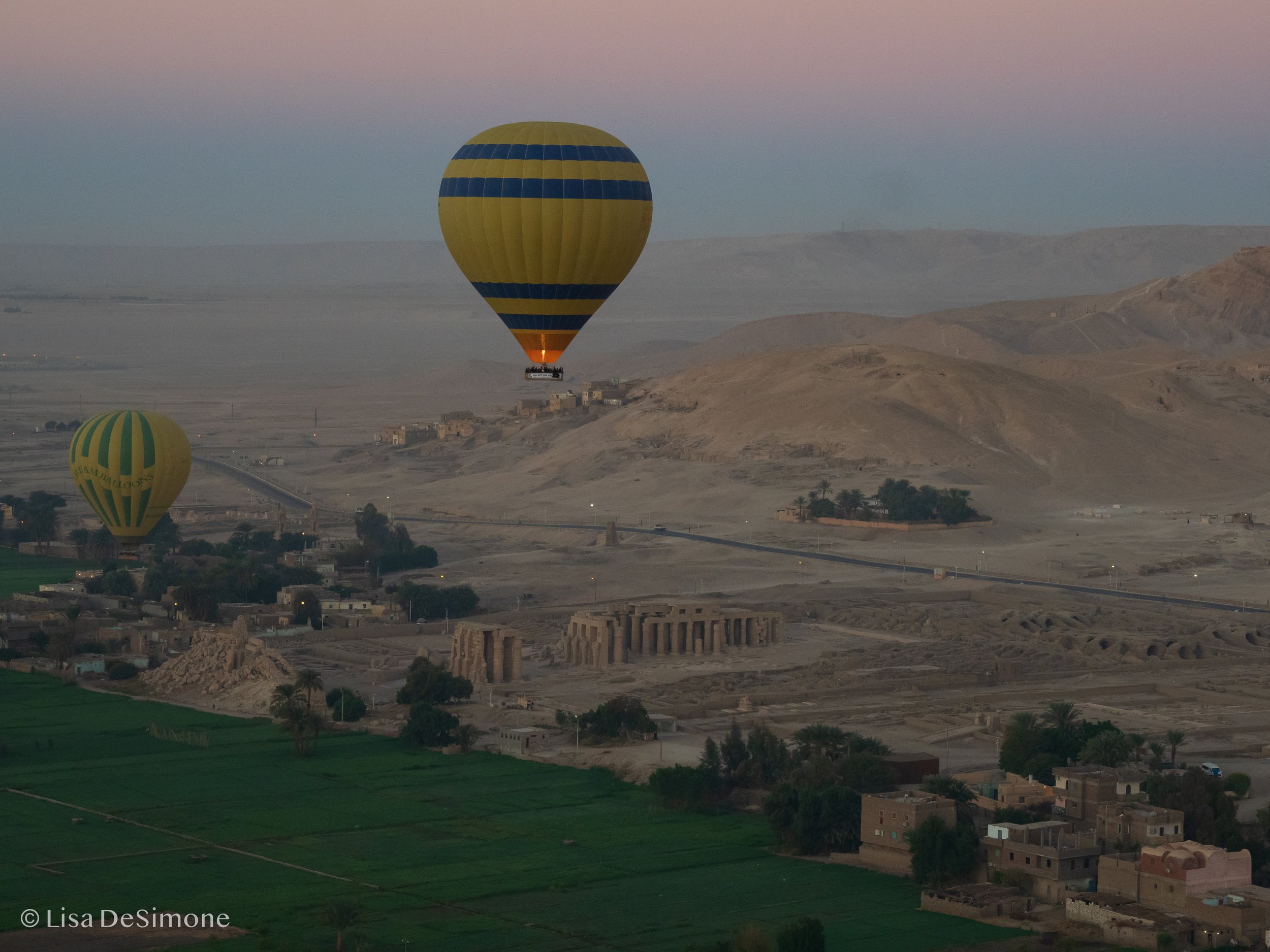
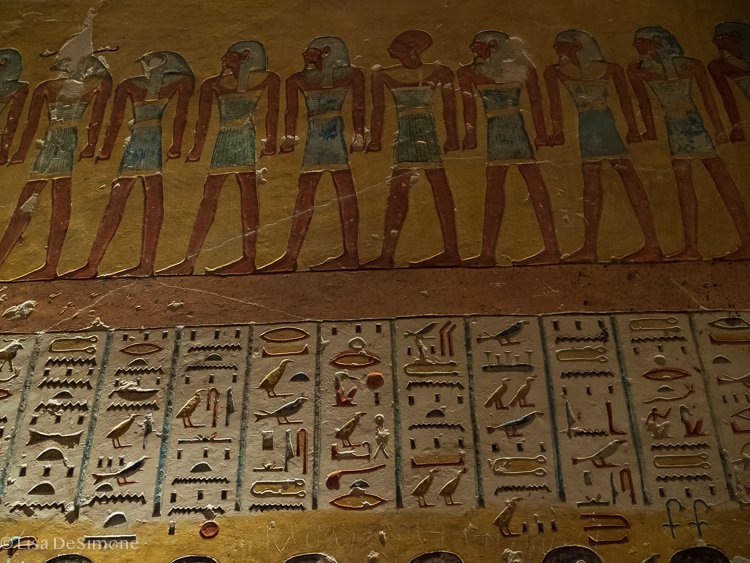
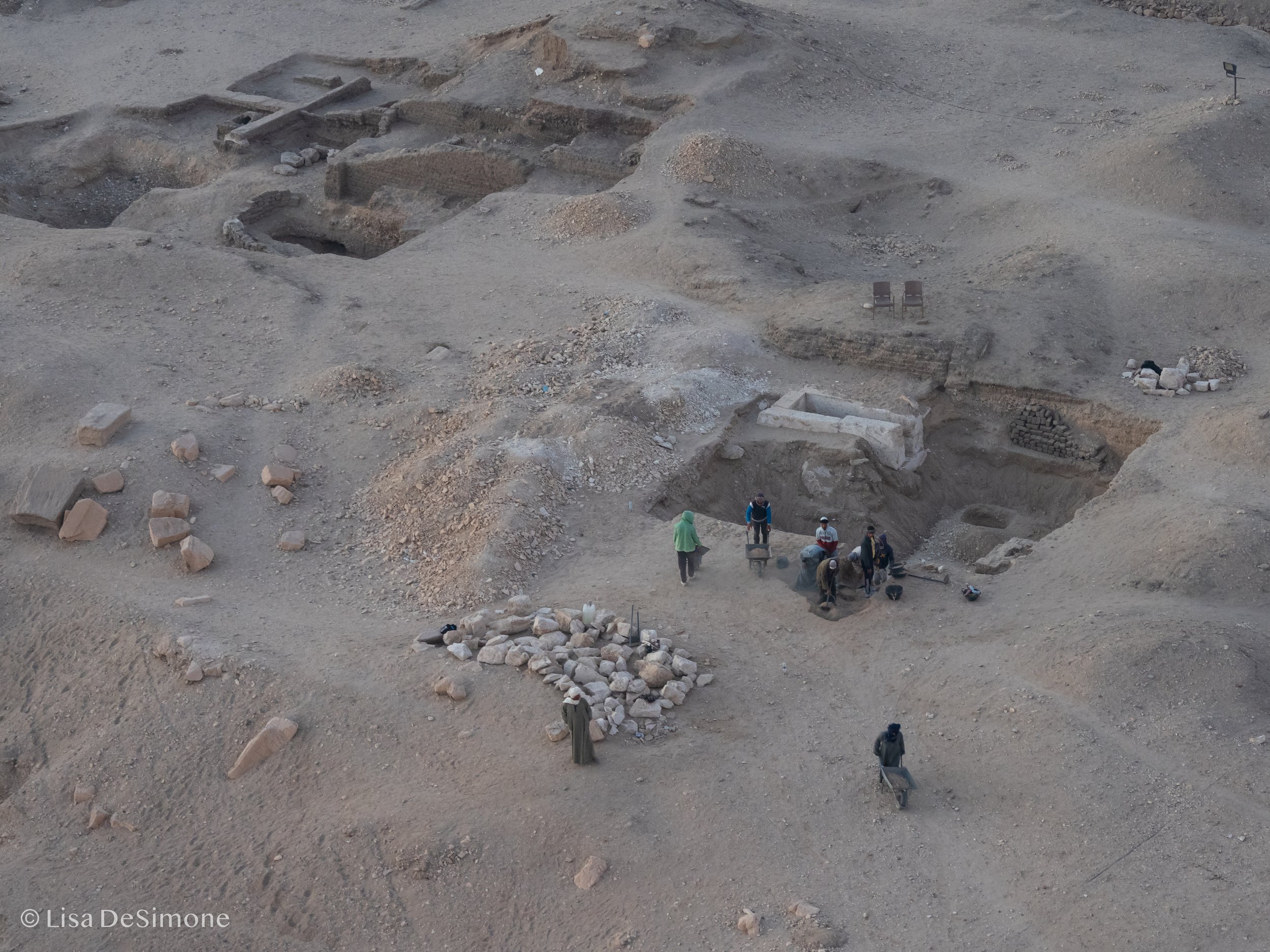
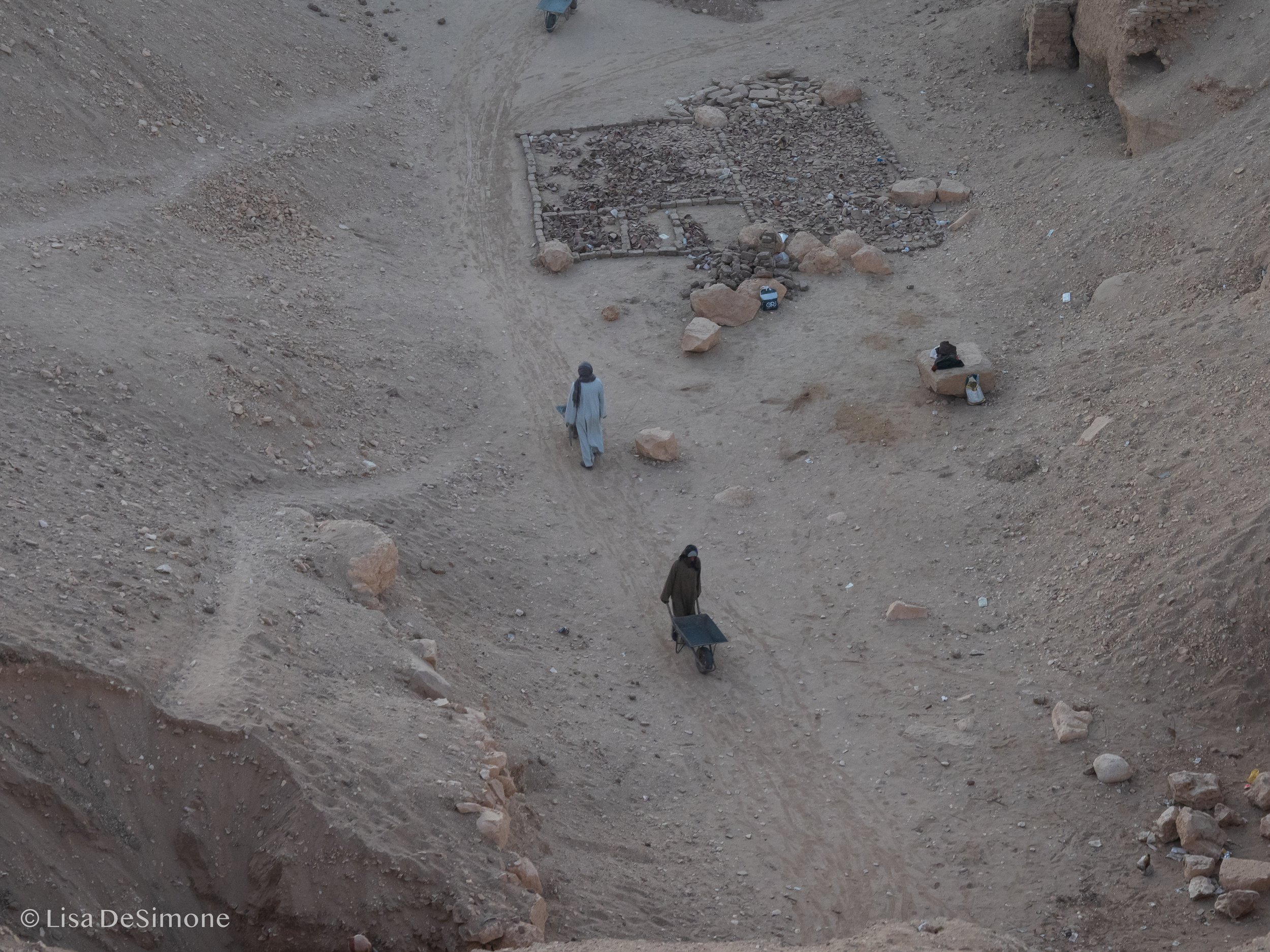
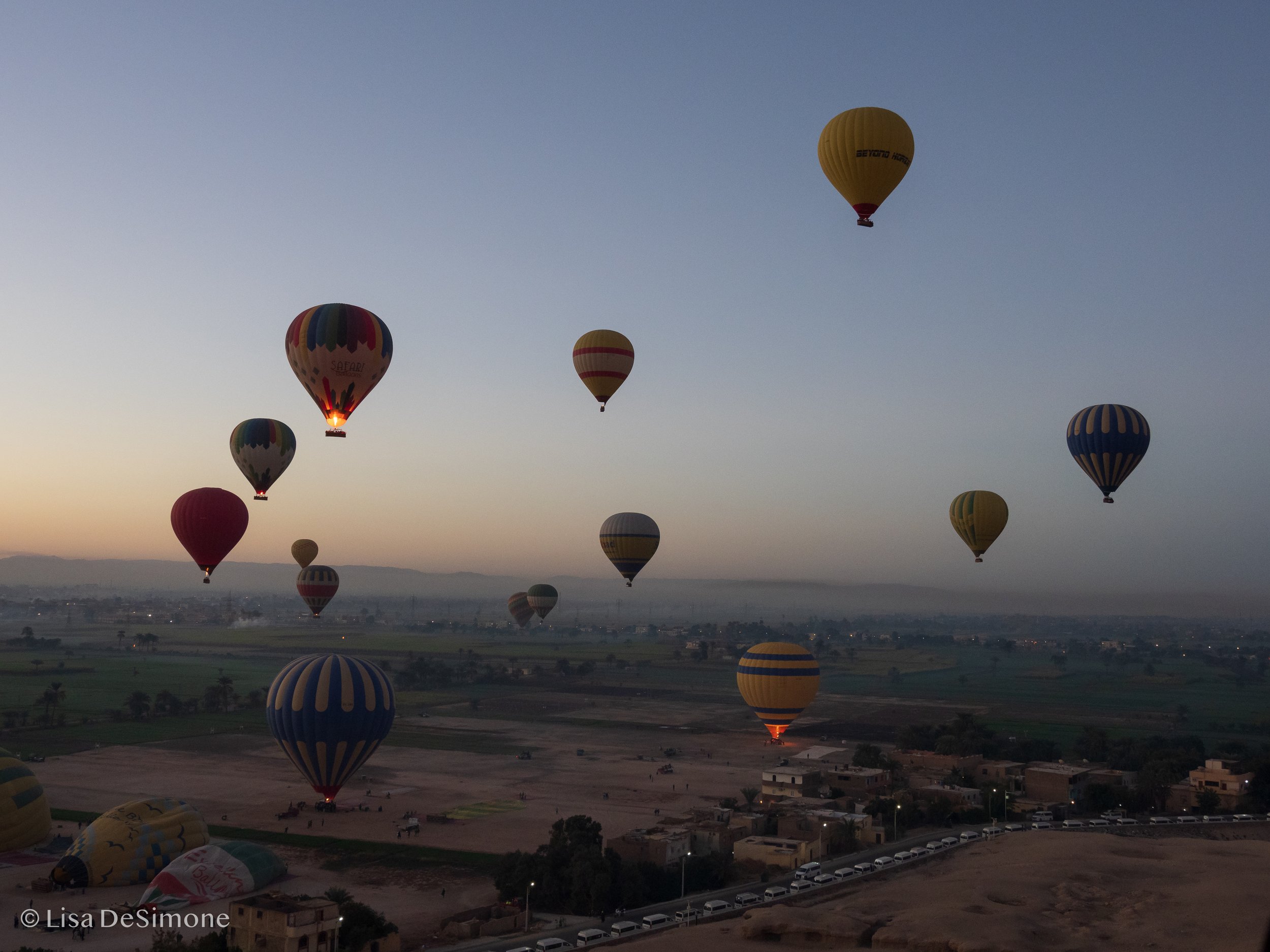
After Luxor, our cruise coasted slowly down the Nile River until we reached the city of Aswan. Most days on board took on a similar rhythm: breakfast, temple visits, lunch on the boat, cruising in the afternoons, more temple visits in the late afternoon, followed by dinner and nighttime entertainment on board.
Key sights that we visited along the Nile include the Temple of Horus in Edfu (the falcon-headed god of the sky) and the Temple of Haroeris and Sobek in Kom Ombo, where it is possible to view mummified crocodiles! Upon arriving in Aswan we spent time exploring some of the local sites, such as Lake Nasser, the impressive Aswan High Dam, the Temple of Philae, and an ancient granite quarry featuring the site of the Unfinished Obelisk.
During our afternoon in Aswan we enjoyed a leisurely sail down the Nile on a felucca (traditional sailboat), exploring the Aswan islands. Aswan has always been a pathway to the rest of Africa and a vibrant trade center, and we also went with our guide to the souk, where even today mounds of dates, spices, tea and hibiscus were piled high, alongside Nubian handicrafts.
On our last full day, we disembarked our cruise ship in the early morning, boarded a short flight from Aswan to Abu Simbel, toured the site for a few hours, then flew all the way back to Cairo arriving around 5 pm. These logistics may sound confusing but trust me, they are not. Some folks choose to drive to Abu Simbel, but that takes a lot more time: this flight routing is very common and much more efficient. I highly recommend adding a trip to Abu Simbel to any itinerary you arrange in Egypt - it is definitely worthwhile.
The Temples of Abu Simbel are among the most significant monuments in Egypt, known for the remarkable twin rock-cut temples of Ramses II and his wife, Queen Nefertari. As a sign of his power as his enemies entered Egypt - or maybe as a sign of pure narcissism - Ramses II had four imposing 70-foot-tall statues of himself hewn out of the mountain at the entrance to his temple. Next door is the Temple of Hathor, whose rock-cut facade is fronted by six smaller statues of Ramses, his wife Nefertari and some of their many children.
The incredible Abu Simbel complex sits overlooking beautiful Lake Nasser, and what may be even more remarkable is that this entire site was disassembled and relocated in 1968 to higher ground to avoid it being submerged by floodwaters caused by the construction of the Aswan High Dam.
From Abu Simbel, we headed back to Cairo and then on to our next destinations, with thoughts of pyramids and pharaohs floating in our heads.





























